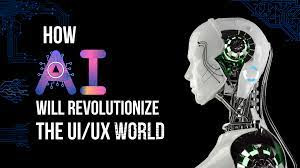The Role of AI in UX Design: Enhancing Creativity and Efficiency
Today, user Experience UX) is powering the success of digital products and interfaces. As businesses aspire to orchestrate seamless user journeys to engage customers, achieving a deep understanding of the needs and perspectives of the users is crucial. Artificial Intelligence (AI) is helping businesses implement innovative tools to enhance user experiences and develop smarter products faster.
In this article,
we explore the need for human
and machine (AI) collaboration in UX design to create, test, and deliver
exceptional products. We will touch upon the importance of user interviews, problem statements, UI design, usability testing, prototyping and testing, information architecture,
and various UX research
methods to achieve transformative outcomes.
AI Technology and its Impact on UX
By analyzing
data, AI can recreate solutions that yield relevant search results, intuitive
platform designs, and more. The powerful editing tool Remove.BG is an example
of this. This tool uses AI to remove backgrounds from images. Thanks to this automation,
there is no need for manual background removal using design tools like Adobe Photoshop. Users can
easily achieve their desired outcomes for their design projects in a fraction of the time.
The Intersection of AI and Design Thinking
Design thinking is
all about understanding users' reasoning for engaging with a design in a certain
way and using assumptions to develop a design strategy. In the ideation phase, empathy
plays an important role. In design thinking, UX professionals must deeply
understand their users, backgrounds, perceptions, and interactions with their
environment. This human-centric approach and knowledge enable designers to innovate
and create more intuitive and empathetic experiences.
Cognitive Bias and the Need for Individual Perspectives
Cognitive bias
can hinder an empathetic approach to design thinking. Designers tend to rely on
conventions they have learned and adopt generalizations, making it challenging
to empathize with each client's unique perspective. Overcoming cognitive biases
allows designers to break free from limitations and offer solutions that truly
resonate with their users.
AI Language Models in UX Design
AI language
models, such as ChatGPT and GPT-4, have provided UX designers with powerful
tools to enhance their creative processes. They speed up brainstorming, improve
search results, and even generate user profiles, which help in developing
intuitive user experiences.
However, these models provide a limited number of solutions, and the need for
human intervention to ensure a successful user experience doesn’t disappear.
Leveraging
Image Models for Better UX
AI image models
have also had a significant impact on UX design. Applications like Midjourney
and Dall.E empower designers to create prototypes and ideate more efficiently
in the visual design
process. For instance, Uizard's AI can convert hand-drawn sketches into digital
screens. Additionally, image models help to conduct user research and testing, wireframing, and prototyping,
relieving designers from the tedious and time-consuming aspects of analytics.
The Significance of AI Image Models
AI image models
combine text into attributes, styles, and concepts, producing immediate and
remarkable results. While the accuracy of AI-generated "artificial"
translations is still debated, image models offer variations and image
generations that streamline the design process. However, ethical concerns arise
when AI uses existing artworks without proper consent or compensation from
artists, questioning the authenticity and originality of the creations.
AI as a Complement, not a Replacement
While AI
technology continues to advance, it should be viewed as a complementary
resource for UX designers rather than a replacement. AI can assist designers
during the initial design phases, providing more precise yet innovative solutions with
less trial and error. However, human intervention remains essential for final
design decisions, as it requires an understanding of emotions, motivations, and
real-world experiences that AI cannot replicate.
Conclusion
The AI
revolution in UX design has opened endless possibilities for creating smarter,
more efficient, and empathetic products and interfaces. AI technologies can
streamline the design process, provide valuable insights, and generate
remarkable results. As UX designers, embracing AI's potential allows us to
leverage technology to enhance creativity, efficiency, and ultimately provide
exceptional user experiences. Nevertheless, AI should always be seen as a tool
to complement our skills and insights, ensuring the human touch remains at the
core of UX design.



Comments
Post a Comment